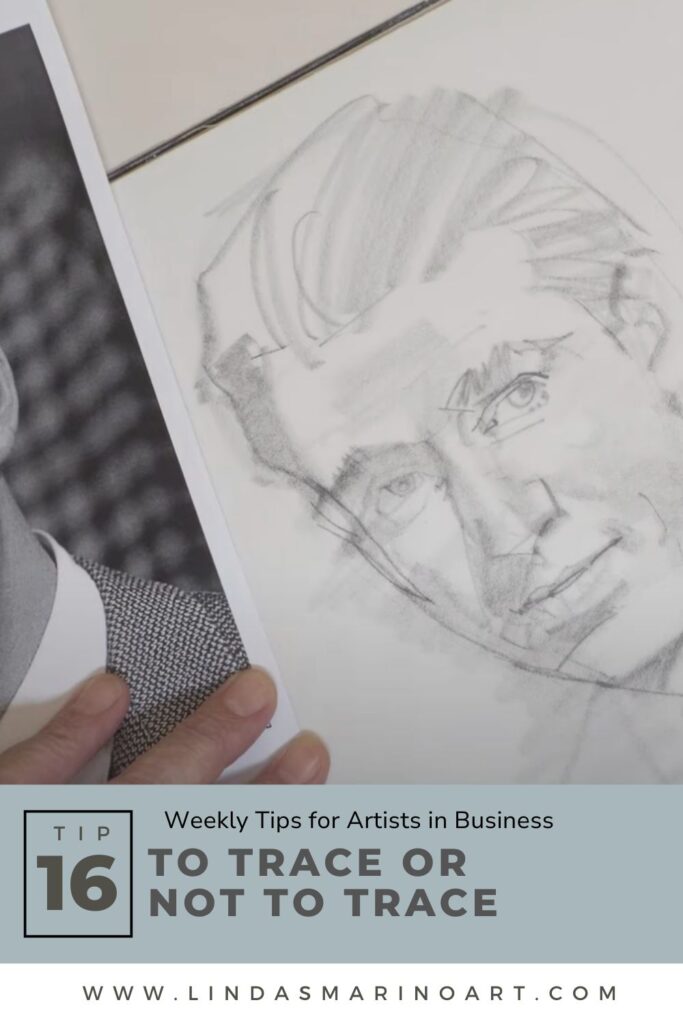The Power of Tracing in Enhancing Your Drawing Skills

Hello, fellow artists!
As we all strive to improve our drawing skills, it’s natural to seek out various techniques and practices. One method that often gets overlooked, or even frowned upon, is tracing. For many, tracing feels like cheating, but I’d like to share why I believe it can actually be a valuable tool in our artistic journey.
I recently came across a fantastic video by James Crandall, an American painter and OPA member, who creates stunning figures incorporated into scenes. His experience as an illustrator for many years lends a great deal of credibility to his advice. In his video, he advocates for the use of tracing paper as a means to improve drawing skills. You can watch his insightful video here.

James Crandall emphasizes that tracing is not just about copying; it’s about learning and internalizing shapes and forms. When you trace, you are committing these shapes to muscle memory, which is crucial in drawing. I couldn’t agree more with James, and here’s why I often use tracing paper in my own practice:
- Checking Accuracy: Tracing allows me to verify the accuracy of my initial drawing. It’s a way to ensure that proportions and lines are where they should be without having to start over from scratch.
- Figuring Out Proportions: When working on a complex piece, especially involving figures, tracing helps me quickly determine if the proportions are working within the composition. It’s a fast and efficient method to refine the overall layout.
- Low-Effort Practice: There are days when we’re all tired and not up for intensive brain work. On such days, tracing provides an opportunity to keep drawing without the mental exhaustion. It’s a way to keep the practice going even when our energy levels are low.
James also mentions that through tracing, we are constantly learning because we’re engaging our muscles in the process of drawing. It’s about developing that muscle memory which is essential in improving our skills.

To all my fellow artists, I encourage you to give tracing a try and see how it can aid your development. Remember, it’s not about the shortcut; it’s about the practice and learning that comes from it. As artists, every technique that helps us grow is worth exploring.
Inspirational Quote:
“Art is not what you see, but what you make others see.” – Edgar Degas
Keep pushing the boundaries of your creativity and never stop learning.
Happy drawing!
Linda
Quick Pause: If you are new here and would like to receive my Canvas Chronicles – a Weekly newsletter which will include this Artist to Artist Challenge right in your inbox – just fill out the form below – I’m excited you’ll be joining me on this journey!
One response to “Artist to Artist Challenge Tip #17 Improving skill by Tracing”
-
I have in the past traced a sketch to get the placement and original drawing just right and feel this is perfectly ok. I think it helps to train your eye just in the doing.
I graduated to using a pencil or brush end as a measure to get correct sizing, which also leads to think about sight size. Anything train your eye to get the best perspective and ratios is great in my opinion.
I still use comparative calipers for initial sizing that causes a really decent first impression. Everyone knows that getting the ratios right from the start leads to quicker correct results. Your little explanations always are on point and very helpful.
I hope you are keeping the idea of putting all your expertise in a book some time. Like I have said so many times. There are few really good instruction guides for those who may no be able to go to a great atelier to learn to put down what they desire.
Leave a Reply